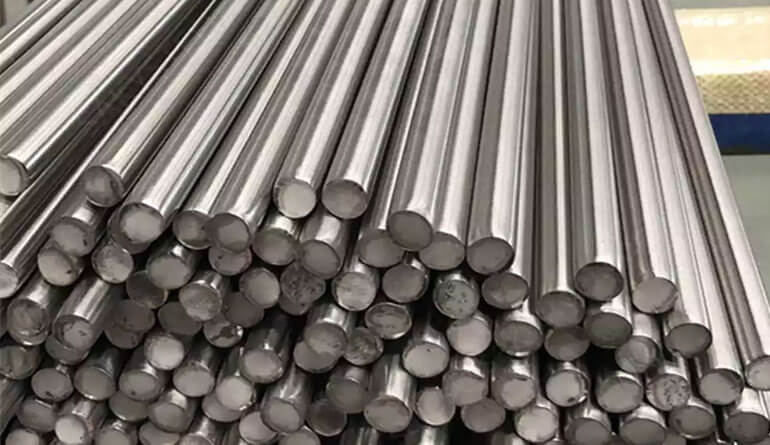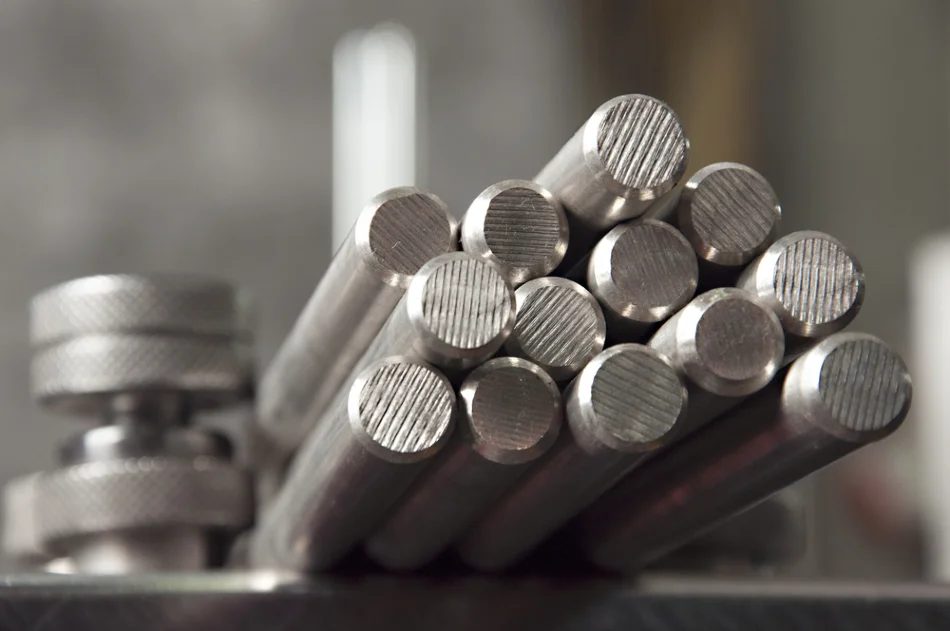Stainless steel is an alloy known for its durability, resistance to corrosion, and versatility in various industries. Among the numerous types available, 420 stainless steel holds a distinct position due to its specific composition and properties.
Introduction to 420 Stainless Steel

420 stainless steel is a martensitic grade stainless steel containing 12-14% chromium and 0.15% carbon. Its distinctive composition contributes to its notable strength and corrosion resistance.
Composition and Properties of 420 Stainless Steel
Carbon content
The moderate carbon content in 420 stainless steel enables it to be heat treated to attain optimal hardness.
Chromium content
Chromium content provides 420 stainless steel with excellent corrosion resistance, making it suitable for various environments.
Applications of 420 Stainless Steel
Industrial uses
420 stainless steel finds applications in the manufacturing of surgical instruments, cutting tools, and specialized machinery parts due to its robustness.
Consumer products
From kitchen utensils to sporting equipment, 420 stainless steel’s durability makes it a preferred choice in consumer products.
Advantages of 420 Stainless Steel
Strengths
Its hardness, strength, and resistance to corrosion make 420 stainless steel a favorable material in harsh environments.
Corrosion resistance
The alloy’s chromium content contributes significantly to its ability to withstand corrosion and oxidation.
Limitations of 420 Stainless Steel
The limitations of 420 stainless steel include its relatively lower hardness compared to some other stainless steel grades. While it’s known for its strength, in comparison to higher-grade stainless steels, it might have slightly lower levels of hardness. Additionally, in highly corrosive environments, 420 stainless steel may be more susceptible to corrosion than some other stainless steel alloys. Understanding these limitations helps in determining the most suitable applications for this particular grade of stainless steel.
| Limitations of 420 Stainless Steel |
|---|
| Lower Hardness |
| Compared to higher-grade stainless steels, 420 stainless steel may exhibit relatively lower levels of hardness. |
| Susceptibility to Corrosion |
| In highly corrosive environments, 420 stainless steel might be more prone to corrosion compared to certain other stainless steel alloys. |
Comparison with Other Stainless Steels
When comparing 420 Stainless Steel with different stainless steel grades like 316 and 304, several key differences become evident:
420 Stainless Steel vs. 316 Stainless Steel
- Corrosion Resistance: While both 420 and 316 stainless steels offer corrosion resistance, 316 stainless steel outperforms 420 in harsh environments due to its higher resistance.
- Composition: 420 stainless steel contains more carbon (0.15%) compared to 316, affecting its hardenability but rendering it more suitable for specific applications where higher hardness is required.
420 Stainless Steel vs. 304 Stainless Steel
- Composition: 420 stainless steel has higher carbon content (0.15%) compared to 304 stainless steel, making it more hardenable but potentially less resistant to corrosion in certain conditions.
- Applications: 304 stainless steel, known for its versatility and corrosion resistance, is often favored in general-purpose applications, while 420 stainless steel is preferred in situations requiring higher hardness and strength.
Each stainless steel grade has its unique properties and applications, making them suitable for specific industrial or consumer needs. Understanding these differences aids in selecting the most appropriate stainless steel for desired applications.
Machinability and Weldability
420 Stainless Steel demonstrates good machinability, allowing for ease in various machining processes. Its composition and properties enable it to be machined using conventional methods, although it might require slower speeds and heavier feeds compared to some other stainless steel grades.
Regarding weldability, 420 Stainless Steel can be welded using common welding techniques. However, preheating and post-weld annealing might be necessary to minimize the risk of cracking and achieve optimal results. Careful consideration of welding parameters and practices is essential to ensure the integrity of the welded joints and maintain the properties of the material.
Understanding the machinability and weldability characteristics of 420 Stainless Steel assists in its effective utilization across different manufacturing and construction applications.
Maintenance and Care Tips
- Regular Cleaning: Use mild soap, warm water, and a soft cloth to clean 420 Stainless Steel surfaces regularly. Avoid abrasive cleaners or harsh chemicals that may damage the material.
- Avoiding Scratches: To prevent scratches, use non-abrasive tools and cloths when cleaning. Opt for materials like microfiber or soft sponges to maintain the surface finish.
- Removing Stains Promptly: Promptly clean any stains or spills, especially acidic substances, to avoid potential corrosion or surface damage.
- Avoiding Contamination: Keep 420 Stainless Steel away from prolonged contact with materials such as carbon steel or iron, as this can cause rust or contamination.
- Drying Thoroughly: After cleaning, ensure the stainless steel is thoroughly dried to prevent water spots or stains.
- Avoiding Hard Water: In areas with hard water, consider using distilled or purified water for cleaning to minimize mineral deposits.
Common Myths and Misconceptions

- Myth: 420 Stainless Steel is Always Magnetic: While 420 Stainless Steel tends to be magnetic due to its composition, the magnetism can vary based on factors like processing and heat treatment. Some variations might not exhibit strong magnetic properties.
- Myth: 420 Stainless Steel is Always Corrosion-Resistant: While 420 Stainless Steel offers good corrosion resistance, it might be susceptible to corrosion in certain harsh environments. Proper care and understanding of its limitations are essential for optimal performance.
- Misconception: 420 Stainless Steel is Not Durable: Contrary to this belief, 420 Stainless Steel is known for its durability and strength, making it suitable for various industrial and consumer applications.
- Misconception: All Stainless Steels are 100% Stain-proof: While stainless steels resist stains and corrosion, they are not entirely immune. Proper maintenance and care are crucial for preserving the appearance and performance of 420 Stainless Steel.
- Myth: 420 Stainless Steel is Unsafe for Food Contact: Depending on the specific grade and certifications, some variants of 420 Stainless Steel can be suitable for certain food-related applications. However, it’s essential to verify the grade’s suitability and certifications for food safety.
Sustainability and Environmental Impact
- Recyclability: One of the notable sustainable aspects of 420 Stainless Steel is its recyclability. Stainless steel is highly recyclable, allowing for reprocessing into new products without loss of quality. This recyclability reduces the need for new raw materials and minimizes waste.
- Longevity and Durability: Products made from 420 Stainless Steel often have a long lifespan due to their durability and corrosion resistance. This longevity reduces the frequency of replacement, contributing to resource conservation and reduced environmental impact.
- Energy Efficiency: The production process of stainless steel, including 420 grade, has become more energy-efficient over time. Advanced technologies and processes have led to reduced energy consumption during manufacturing, thereby lowering the overall environmental footprint.
Industry Standards and Grades
- ASTM Standards: ASTM International sets standards for various materials, including stainless steels. ASTM A276 and ASTM A314 are commonly referenced standards for the composition, mechanical properties, and heat treatment requirements of 420 Stainless Steel.
- UNS Designation: 420 Stainless Steel is often designated under the Unified Numbering System (UNS) as UNS S42000, providing a standardized identification for this specific grade across industries and applications.
- European Standards (EN): The European standards also cover stainless steels, including grades similar to 420 Stainless Steel. EN 10088 and EN 10095 are among the standards specifying the chemical composition, mechanical properties, and delivery conditions of stainless steels in Europe.
- ISO Standards: The International Organization for Standardization (ISO) may have standards that relate to the manufacturing, testing, or use of 420 Stainless Steel, ensuring global compatibility and quality assurance.
Where to Source 420 Stainless Steel Products
- Specialty Steel Suppliers: Numerous specialty steel suppliers or distributors offer 420 Stainless Steel in various forms such as sheets, bars, and tubes. These suppliers often cater to specific industries like manufacturing, construction, and automotive.
- Online Metal Marketplaces: Online platforms and marketplaces dedicated to metals and alloys provide a wide range of options for purchasing 420 Stainless Steel. Websites like Metal Supermarkets, Online Metals, or Alibaba offer access to suppliers globally.
- Local Metal Fabricators: Local metal fabrication shops or manufacturers might also stock or have access to 420 Stainless Steel. Establishing relationships with these businesses can provide access to tailored solutions and products.
- Industrial Trade Shows: Attending industry-specific trade shows or exhibitions related to metals and materials often presents opportunities to connect with suppliers and manufacturers specializing in 420 Stainless Steel.
- Direct from Manufacturers: Some manufacturers of 420 Stainless Steel products sell directly to consumers or businesses. Contacting these manufacturers directly can sometimes lead to competitive pricing and customized solutions.
Future Trends and Developments
- Advanced Manufacturing Techniques: The future might witness advancements in manufacturing processes that enhance the properties and applications of 420 Stainless Steel. Innovative techniques could lead to improved strength, corrosion resistance, or other desirable characteristics.
- Tailored Applications: As industries evolve, there might be a growing demand for 420 Stainless Steel tailored to specific applications. Customized alloys or treatments could emerge to meet the unique needs of diverse industries, such as aerospace, medical, or renewable energy sectors.
- Enhanced Sustainability: The stainless steel industry might focus on further reducing environmental impact. Developments in eco-friendly production methods, recycling technologies, and reduced energy consumption could shape the future of 420 Stainless Steel.
- Innovative Product Designs: Ongoing research and development might result in the creation of innovative products utilizing 420 Stainless Steel. New designs or applications in fields like architecture, automotive engineering, or consumer goods could emerge.
- Increased Alloy Diversity: Future trends might involve the development of new alloys or blends of 420 Stainless Steel, offering enhanced properties such as increased hardness, improved machinability, or heightened corrosion resistance.
Conclusion
In conclusion, 420 Stainless Steel stands as a formidable alloy in the realm of stainless steels, known for its unique composition and versatile properties. Its moderate carbon content and chromium infusion contribute to its notable strength, corrosion resistance, and machinability.
This alloy finds extensive use across diverse industries, from manufacturing surgical instruments and machinery parts to crafting consumer products like kitchen utensils and sporting equipment. While boasting significant advantages in strength and corrosion resistance, it’s essential to acknowledge its limitations, including slightly lower hardness compared to higher-grade stainless steels and susceptibility to corrosion in specific environments.
FAQs
- Is 420 stainless steel suitable for outdoor applications?
420 stainless steel can withstand moderate outdoor conditions but might corrode in highly corrosive environments. - How does 420 stainless steel compare to 316 stainless steel in terms of corrosion resistance? While 420 stainless steel offers decent corrosion resistance, 316 stainless steel surpasses it with higher resistance, especially in harsh conditions.
- Can 420 stainless steel be heat treated? Yes, its moderate carbon content allows for heat treatment to enhance its hardness.
- Is 420 stainless steel food-safe? It can be used in certain food applications, but it’s essential to check specific grade certifications for food safety.
- What are the primary industries that utilize 420 stainless steel? Industries such as medical, cutlery, manufacturing, and consumer goods commonly utilize 420 stainless steel.
